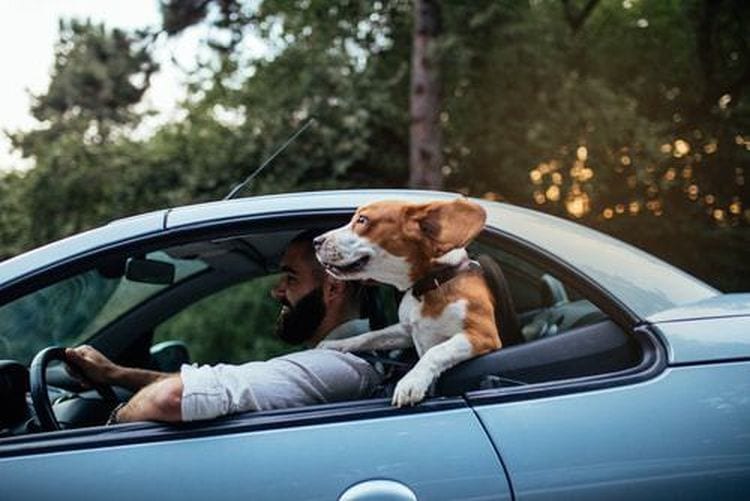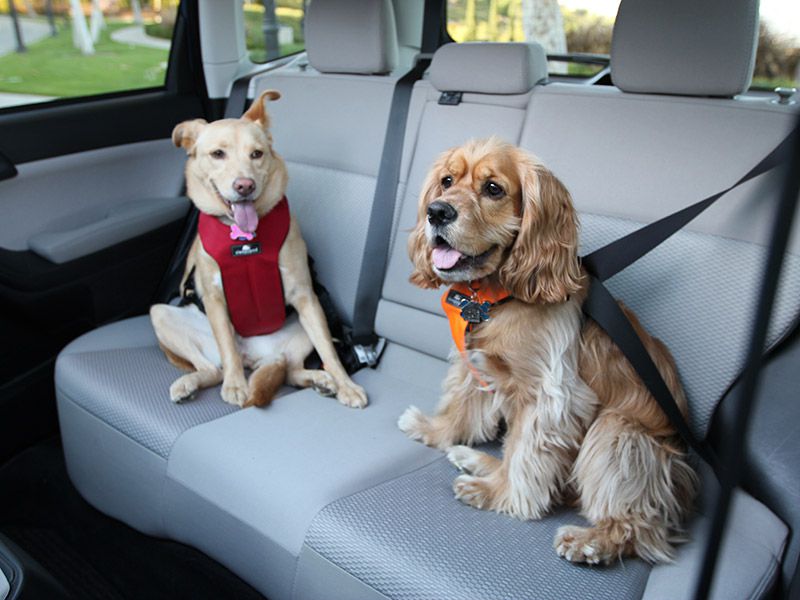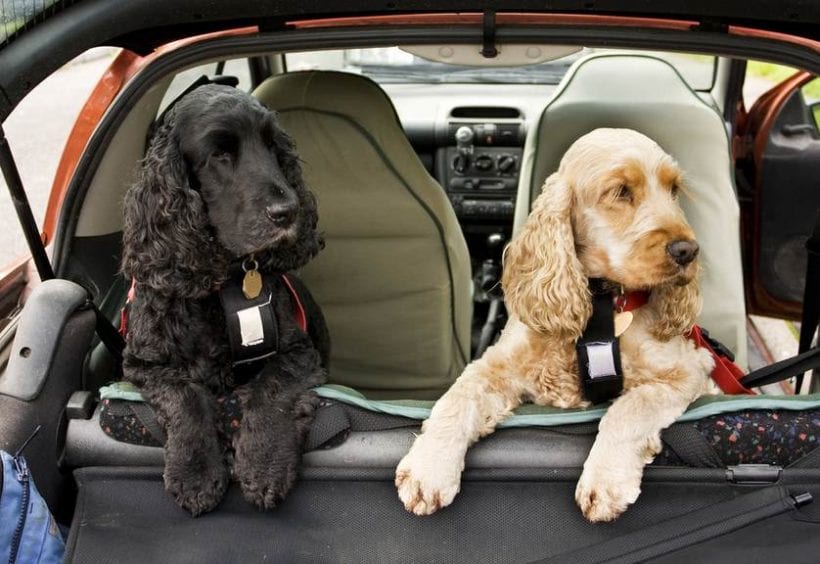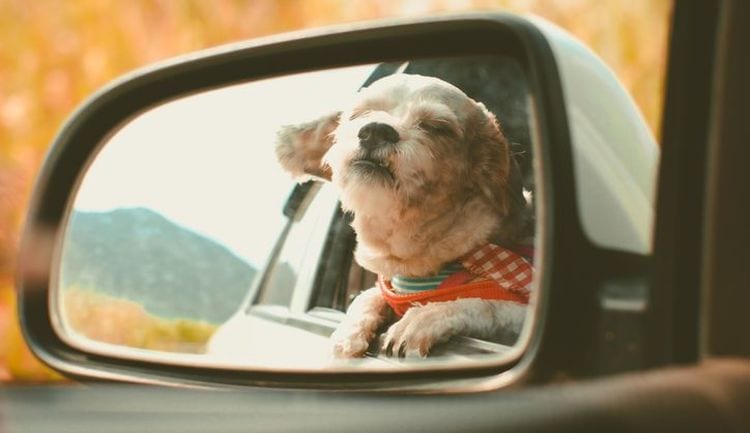Your dog always wants to tag along wherever you go. And that includes traveling with you in your car. Well, most dogs seem to enjoy car rides but that should no bet the ultimate achievement for you. If your dog is not happier and feels anxious, you might want to see what’s wrong with him and seek veterinary care. But if he enjoys car rides and travels with you often, you have to keep some things in your mind for your and your pooch’s safety.
Safety Tips For You And Your Dog While Traveling By Car

Remember this, your dog is a big distraction for you. A dog can’t comprehend the importance of focus while driving but you have to make sure you are focused and your dog doesn’t distract you. Your dog might get excited and might go bonkers or your small puppy might want to run inside the moving car. Here are some tips for you to travel safely with your dog.
1. Never Leave Your Dog In The Car Alone
It feels convenient to keep your dog locked in your car while you go out, get your job done, and get back. You might think your dog will be safe but it’s not. The first thing to remember that it’s against the law to lock your dog in the parked car.
In addition to that, hot and humid weather can affect the space inside the car so badly that your pooch might be fainted or even die due to extreme suffocation and hot air. A similar effect can be observed in winters. It gets so cold inside the locked car space that it may freeze your dog. In a nutshell, this tip is to be considered for all-year-round.
2. Use Equipment Designed For Dogs

If you do not have someone with you in the car, you should keep your dog anchored with the seat. Use a seat belt to bolt your dog’s crate or any carrier. And if your dog is not in a carrier, you should use high-quality dog seat belts and harness, that you can find on sites like petlovesbest.com, to stop your dog from moving around in the car.
In fact, in some states, it is prohibited to keep your dog free without tieing them with the seat using the right equipment. There are many choices available to you. There are seat belts that can attach to your dog’s harness while some come with a special restraint harnesses. Or you can get a seat belt that can tie your dog’s crate.
3. Deal With The Motion Sickness
Some dogs get really sick with the moving car. However, there’s no all-in-one solution available to solve the problem. If this has happened with your pooch, seek your veterinarian’s help. Here are some general signs that will help you understand that your dog has a motion sickness: Restlessness, vomiting, whining, excessive yawning, fatigue, and abnormal drooling.
Young puppies are more likely to suffer from motion sickness because they haven’t yet developed the full inner ears. Moreover, feed your canine buddy two hours ago before you start your journey. If you’re so confident about your dog won’t get sick, it is ok to feed him while you’re on your way and during the stops you take on long car rides.
The last thing you would want to see is your dog throws up while you’re driving on a freeway. Do not even toss a single treat while traveling. Nevertheless, it is always a good idea to have a dog car seat cover for the back seat in case it throws up.
4. Dogs Associate Memories With Roads
Dogs can remember quite a lot of things, especially, roads and tracks. You might have seen dogs lost their way out in the wild can make to the home themselves. This is possible because they remember.
So if you go to a park every once in a while, your dog might get over-excited as soon as he finds out you have chosen a route that heads to the park. On the other hand, he might get anxious and show the signs if you’re driving to your vet’s office. That being said, you need to train your dog to stay calm in all kinds of environments.
You can achieve this by desensitizing your pooch with triggers. This will help an anxious dog and overly excited dogs. You can always use any reward-based positive reinforcement training.
5. Use Dog Crates and Carriers
One of the reasons why your dog is not your dog in a moving car is he doesn’t feel a safe haven in a car. And this ultimately leads to associating bad memories with car travel. It is so important that your dog from his puppyhood considers the car as a happy place.
Dogs in their crates or carriers feel safe and secure, in fact, they’re safe in case of accidents. Moreover, if your dog is in a crate, he would not be able to distract you so it is actually safe for both of you to carry him in a crate. The additional benefit is you will have a crate to keep your dog safe inside at the place you’re visiting.
However, a normal crate is not always suitable for traveling purposes. There are specially tailored dog travel-friendly crates available in the market that assures safety and security.

The EndNote
Please keep in mind all the tips I’ve mentioned in this article. That will help you to keep you and yourself safe while you drive the car. One general tip is you can always have someone with you to look after your dog. This is important especially, you’re not used to traveling with your buddy. Also, if more people with more dogs can join you, your dogs will be able to enjoy more and will have more eyes to look after them. Also, do not let your dog stick his head out of the window. We all know dogs love it, but it’s dangerous because he might get injured in the case of near-miss.

